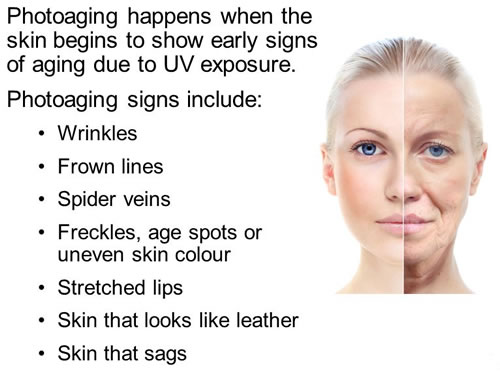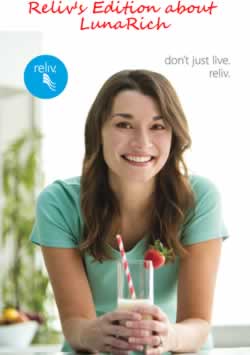We are born with a different skin type, a fact we can’t help to avoid. But do you know that the fairer our skin is, the higher the risk of photoaging? One thing that I find important to know is that skin that has more melanin or discoloration tends to provide more natural protection from the sun and can lower the risk of photoaging for a youthful and healthier skin.
To minimize the risk of photoaging, we tend to ensure our skin is smothered with sunscreens of SPF 15 or higher; what I do know is that it is also good to supplement our diet with a well-balanced combination of antioxidants. Medical studies have found that taking an anti-oxidative combination of beta-carotene, lycopene (tomato extract), vitamin C and E, selenium and proanthocyanidins (grape seed extract) along with the use of topical sunscreens can provide our skin with better degree of protection from the damaging effects of photoaging.

Photoaging is a premature aging of the skin caused by repeated exposure to ultraviolet radiation (UV) primarily from the sun, but it can also from artificial UV sources.
(Image Credit: Haliburton Kawartha Health Unit)
Photoaging is a premature aging of the skin caused by repeated exposure to ultraviolet radiation (UV) primarily from the sun, but it can also from artificial UV sources.
(Image Credit: Haliburton Kawartha Health Unit)
You may also want to know that by identifying our own skin type, it helps us to better understand the risk factors involved with regards to photoaging and allows us to take the necessary steps to prevent the damaging effects therefrom.
Well, there are six types of skin, ranging from light to dark:
Type I
The skin is very fair and freckled and hair is usually red or blond in color. If you always burn and never tan in the sun, you are extremely susceptible to photoaging and are at a very high risk for melanoma – the deadliest type of skin cancer.
Type II
Fair skin that burns easily and rarely tans in the sun, and have blond to sandy-colored hair. If this describes you, then you are also highly susceptible to photoaging and to skin cancer.
Type III
Skin is fair to olive and hair color ranges from light to dark brown. If you sometimes burn and sometimes tan in the sun, you are susceptible to skin damage as well as skin cancer.
Type IV
Brownish skin and dark brown hair – if you tend to tan easily and are less likely to burn, then you are not as vulnerable as skin type 1 to 111 as described above.
Type V
If your skin is darker than skin type IV and your hair is dark brown to black, and you tan easily and rarely burn – if so then you are at a lower risk of developing photoaging skin compared to skin types I to IV.
Type VI
If you have very dark skin with curly and black hair and if you never burn and have the lowest tendency to react to sunlight, then congratulation as this will make you the least vulnerable to photoaging!
Based on the above skin type analysis, you will notice that skin type I to III face the highest risk of developing photoaging skin while skin types IV to VI are at the lowest risk.
I would say that no matter what your skin type is, it always pays to take extra precaution to reduce the effects of photoaging which ultimately lead to a healthier skin and a beautiful and youthful YOU!








